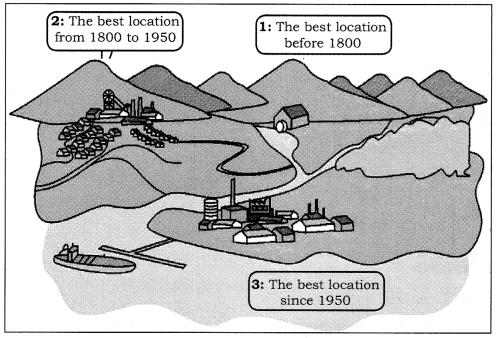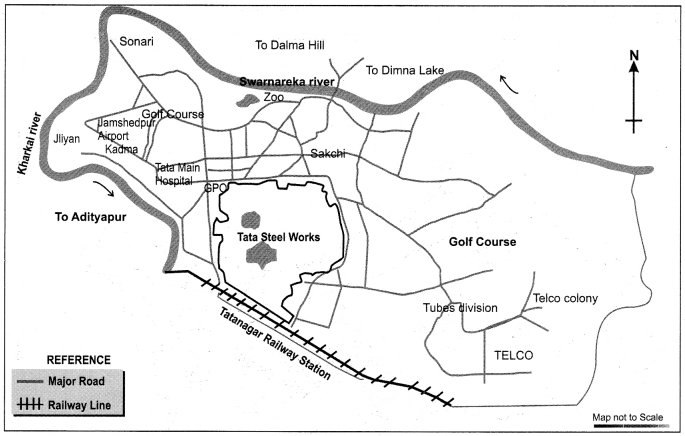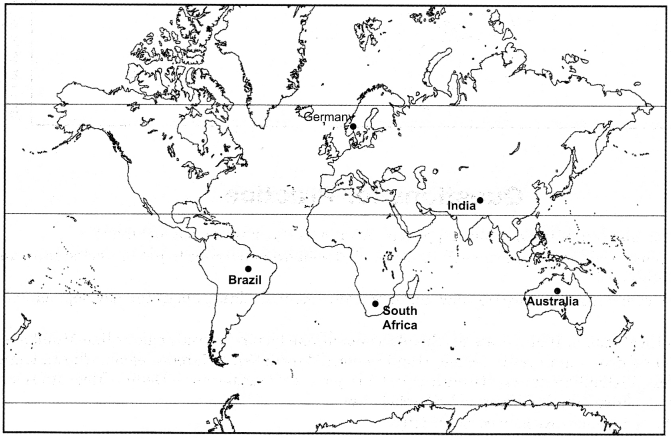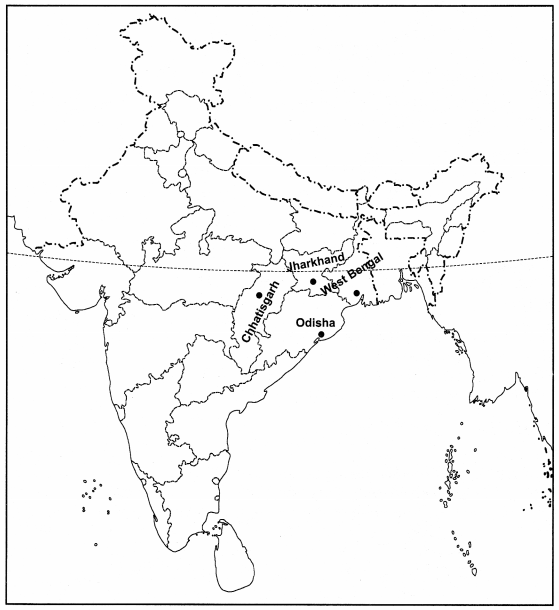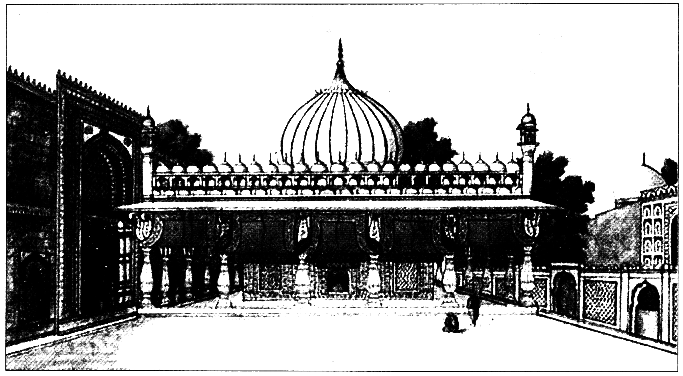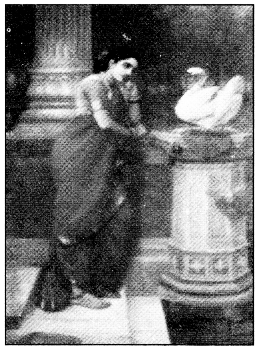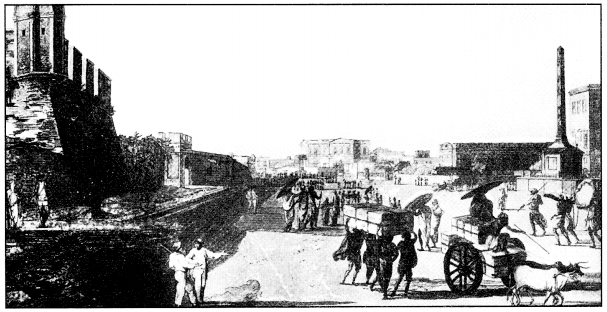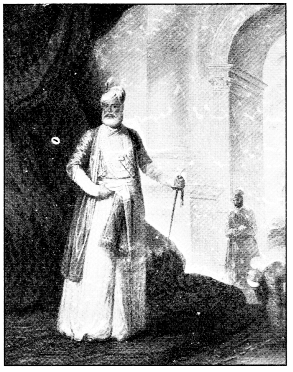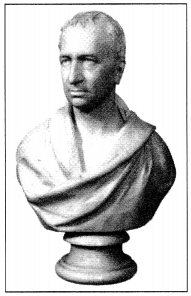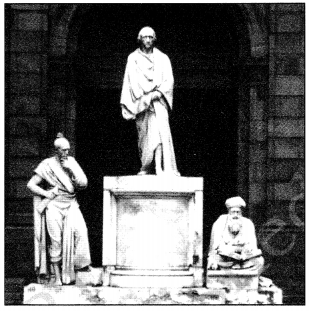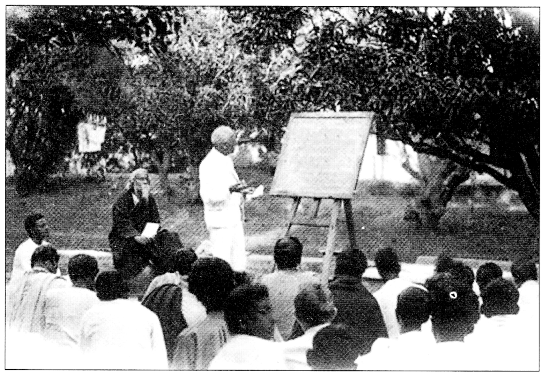Agriculture Class 8 Geography Chapter 4 Extra Questions and Answers Social Science CBSE Pdf free download are part of Extra Questions for Class 8 Social Science. Here we have given NCERT Extra Questions for Class 8 Social Science SST Geography Chapter 4 Agriculture.
You can also practice NCERT Solutions for Class 8 Geography Chapter 4 Questions and Answers on LearnInsta.com.
Class 8 Geography Chapter 4 Extra Questions and Answers Agriculture
Agriculture Class 8 Extra Questions and Answer Geography Chapter 4 Very Short Answers Type
Question 1.
Define the term Agriculture.
Answer:
Agriculture is the science and art of cultivation on the soil, raising crops and rearing livestock. It is also called farming.
Question 2.
What is meant by Horticulture?
Answer:
Horticulture is the growing of vegetables, flowers and fruits for commercial use.
Question 3.
Define Viticulture.
Answer:
Viticulture means the cultivation of grapes.
Question 4.
Where is the breeding of fish done in the process of Pisciculture?
Answer:
Breeding of fish is done in specially constructed tanks and ponds.
Question 5.
Define commercial farming.
Answer:
In commercial farming crops are grown and animals are reared for sale in market.
Question 6.
Who has discovered the coffee plant?
Answer:
In about AD 850, Kaldi, an Arab goat-herder has discovered the coffee plant.
Question 7.
What type of climate and soil are required by coffee in its growth?
Answer:
Coffee requires warm and wet climate and well-drained loamy soil.
Question 8.
What is also known as ‘Golden Fibre’?
Answer:
Jute is also known as the ‘Golden Fibre’.
Question 9.
Define Agricultural Development.
Answer:
Agricultural development refers to efforts made to increase farm production in order to meet the growing demand of increasing population.
Question 10.
Mow does farmers wo.tfs in TJ.S.A?
Answer:
The farmer in U.S.A work like a businessman and not like a peasant farmer.
Question 11.
Give some examples of Primary Activities.
Answer:
Agriculture, fishing, gathering, etc.
Question 12.
Give some examples of secondary activities.
Answer:
Manufacturing of steel, baking of bread and weaving of clothes, etc.
Question 13.
What should be the Meal condition for the growth of jute?
Answer:
It requires high temperature, heavy rainfall, and humid climate.
Question 14.
What is Tea?
Answer:
Tea is a beverage crop grown on plantations.
Question 15.
What is the quantity of labour required for the purpose of picking the leaves?
Answer:
Labour in large quantity is required for the purpose of picking the leaves.
Question 16.
What is the ideal condition for the growth and plantation of Maize?
Answer:
Maize requires moderate temperature, rainfall and lot of sunshine.
Question 17.
Which food crop is the stable diet of tropical and subtropical regions?
Answer:
Rice.
Question 18.
Which food crop is also known as coarse grains?
Answer:
Millets.
Question 19.
What does primitives farming include?
Answer:
This includes shifting cultivation and nomadic herding.
Question 20.
Define the term Milpa.
Answer:
In Mexico practice of shifting cultivation is known as Milpa.
Agriculture Class 8 Extra Questions and Answer Geography Chapter 4 Short Answers Type
Question 1.
How does the Joe Horan grow com with full scientific ways?
Answer:
Joe Horan, a farmer, grows corn on his field after making sure that soil and water resources meet the needs of this crop. Adequate measures are taken to control pests that can damage the crop.
From time to time he sends the soil samples to soil testing laboratory to check whether the nutrients are sufficient or not. The results help Horan to plan a scientific fertiliser programme. His computer is linked to the satellite which gives him a precise picture of his field. This helps him to use chemical fertilisers and pesticides wherever they are required.
Question 2.
What is Agricultural Development and what is the ultimate aim of agricultural development?
Answer:
Agricultural development refers to efforts made to increase farm production in order to meet the growing demand of increasing population. This can be achieved in many ways such as increasing the cropped area, the number of crops grown, improving irrigation facilities, use of fertilisers and high yielding variety of seeds. Mechanisation of agriculture is also another aspect of agricultural development. The ultimate aim of agricultural development is to increase food security.
Question 3.
How is rice a major food crop in category of crops grown to meet the requirement of the growing population?
Answer:
Rice is the major food crop of the world. It is the staple diet of the tropical and sub-tropical regions. Rice needs high temperature, high humidity and rainfall. It grows best in alluvial clayey soil, which can retain water. China leads in the production of rice followed by India, Japan, Sri Lanka and Egypt. In favourable climatic conditions as in West Bengal and Bangladesh two or three crops are grown in a year.
Question 4.
What do the term plantations means and which are the major plantations in the tropical regions of the world?
Answer:
Plantations are a type of commercial farming where single crop of tea, coffee, sugarcane, cashew, rubber, banana or cotton are grown. Large amount of labour and capital are required. The produce may be processed on the farm itself or in nearby factories. The development of a transport network is thus essential for such farming.
Major plantations are found in the tropical regions of the world. Rubber in Malaysia, Coffee in Brazil, tea in India and Sri Lanka are some examples.
Question 5.
How is Nomadic farming practised? What does the reared animal provide the herders and their family?
Answer:
Nomadic herding is practised in the semi-arid and arid regions of Sahara, Central Asia and some parts of India, like Rajasthan and Jammu and Kashmir. In this type of farming, herdsmen move from place to place with their animals for fodder and water, along defined routes.
This type of movement arises in response to climatic constraints and terrain, sheep, camel, yak and goats are most commonly reared. They provide milk, meat, wool hides and other products to the herders and their families.
Agriculture Class 8 Extra Questions and Answer Geography Chapter 4 Long Answers Type
Question 1.
What is subsistence farming? Briefly explain its classifications.
Answer:
Subsistence farming is practised to meet the needs of the farmer’s family. Traditionally, low levels of technology and household labour are used to produce on small output. Subsistence farming can be further classified as intensive subsistence and primitive subsistence farming.
Intensive subsistence farming: In this type of farming the farmer cultivates a small plot of land using simple tools and more labour. Climate with large number of days with sunshine and fertile soils permit growing of more than one crop annually on the same plot. Rice is the main crop. Other crops include wheat, maize, pulses and oilseeds.
Intensive subsistence agriculture is prevalent in the thickly populated areas of the monsoon regions of south, southeast and east Asia.
Primitive subsistence farming: It includes shifting cultivation and nomadic herding.
Shifting cultivation: It is practised in the thickly forested areas of Amazon basin, tropical Africa, parts of Southeast Asia and Northeast India. These are the areas of heavy rainfall and quick regeneration of vegetation. A plot of land is cleared by felling the trees and burning them.
The ashes are then mixed with the soil and crops like maize, yam, potatoes, and cassava are grown. After the soil loses its fertility, the land is abandoned and the cultivator moves to a new plot. Shifting cultivation is also known as ‘slash and bum’ agriculture.
Nomadic herding: It is practised in the semi-arid and arid regions of Sahara, Central Asia and some parts of India, like Rajasthan and Jammu and Kashmir. In this type of farming, herdsmen move from place to place with their animals for fodder and water, along defined routes.
This type of movement arises in response to climatic constraints and terrain. Sheep, camel, yak and goats are most commonly reared. They provide milk, meat, wool hides and other products to the herders and their families.
Picture Based Questions Class 8 Geography Chapter 4 Agriculture
Look at the picture given below and answer the following questions:
Picture-1

(i) What is shown in the above figure?
(ii) Which method is used in the picture for the purpose of ploughing?
Answer:
(i) Farmers ploughing a field is shown.
(ii) Traditional method is used.
Picture-2

(i) What type of plantation is shown in the above picture?
(ii) Who had discovered these plants?
Answer:
Coffee plantation.
Kaldi, an Arab goat – herder, had discovered the coffee plant.
Map Skills Class 8 Geography Chapter 4 Agriculture
Question 1.
On an outline Map of World mark the following countries where Maize is grown:
(i) North America
(ii) Brazil
(iii) China
(iv) Russia
(v) Canada
(vi) India
(vii) Mexico
Answer:

Question 2.
Mark the countries where cotton is grown suitably on the outline Map of World.
(i) China
(ii) USA
(iii) India
(iv) Pakistan
(v) Brazil
(vi) Egypt
Answer:

Question 3.
Mark the countries on an outline Map of World showing major plantations found in the tropical regions of the world.
(i) Rubber in Malaysia
(ii) Coffee in Brazil
(iii) Tea in India
Answer:

